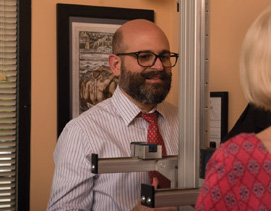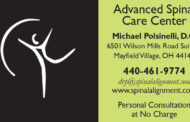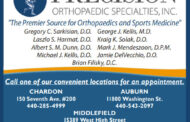 I have been in the health field for almost 25 years. I focus on the whole person to get them well as soon as possible utilizing gentle upper cervical chiropractic, nutrition, ortho-bionomy, and applied kinesiology. I currently practice and have recently started teaching QSM3 (Quantum Spinal Mechanics³) which is an offshoot of NUCCA (National Upper Cervical Chiropractic Association).
I have been in the health field for almost 25 years. I focus on the whole person to get them well as soon as possible utilizing gentle upper cervical chiropractic, nutrition, ortho-bionomy, and applied kinesiology. I currently practice and have recently started teaching QSM3 (Quantum Spinal Mechanics³) which is an offshoot of NUCCA (National Upper Cervical Chiropractic Association).
By Dr. Michael Polsinelli, D,C,, Advanced Spinal Care
The importance of proper back alignment: An upper cervical chiropractor’s perspective.
Back and neck alignment is a term used by various chiropractors, mattress and pillow sellers, yoga and dance instructors. One hears the terms “proper neck alignment” and “proper back alignment” so often that they have lost meaning (this is coming from someone whose website is www.spinalalignment.com).
Why it is important to be in alignment?
I define proper alignment as when a person’s legs are equal in length, hips are the same height, shoulders are balanced and certain posture muscles are strong and doing their job.
A person is out of alignment when they have any of the following: a short leg, a hip high, a shoulder high, a head tilt, weak posture muscles, and a 5% or more imbalance of their body weight between their right and left side.
It’s true that many people walk around out of alignment without pain, and do fine. However, being out of alignment over the long term creates unequal forces, eventually leading to wear and tear on the joints and can affect the neck, back, knees, hips and ankles.
When some muscles are weak, others will contract and work harder to compensate. Fatigue and pain can follow, and lead to headaches and migraines.
However, my main concern is that being out of alignment is a symptom of an even greater problem. It is a symptom of dysfunction within your nervous system.
The nervous system is our body’s the master controller. The brain sends and receives information through the brainstem, spinal cord (which goes through the center of the bones in the back), and nerve roots that go to every muscle, joint and organ (including the lungs, liver, heart, adrenals, stomach, and colon). When the nervous system is unimpeded and a problem occurs, the brain and body are able to talk and heal the problem quickly and easily without you even being aware of it.
The weakest link in our spine is in the upper neck. The first bone in the neck, called the Atlas (like the Greek god who held the world on his shoulder), is the most movable bone in the entire neck.
When we have an accident or injury that tears loose the connective tissue that holds the Atlas in place, The Atlas can then shift and twist out of position, irritating the brainstem and spinal cord. Proper signals then become distorted or blocked.
My focus is to get the Atlas into place enough so that it no longer puts pressure on the brainstem and spinal cord. When this happens, we can see the legs come even, the hips and shoulders become level, and the posture muscles strengthen.
Studies have shown that upper cervical care can not only help headaches, herniated discs, neck and back pain, but also seemingly unrelated problems such as Meniere’s disease, Trigeminal neuralgia, and high blood pressure.
The upper cervical adjustment works because we are addressing an injury to the nervous system, which controls all bodily functions. High blood pressure and spinal misalignment are just two possible symptoms of an injury to the nervous system.
As you consider seeing an upper cervical chiropractor, don’t just consider it for symptoms of pain, headaches, or even high blood pressure. Don’t just consider it for your knees, or arthritis, or for sleeping better. In addition, I don’t want you to just consider it for prevention or aging gracefully, or being well. Consider it, instead, for your brain, brainstem, and nervous system. Consider it because your nervous system controls all bodily functions. Consider it for your health. Consider it to unleash the innate healing ability of your own body.
























